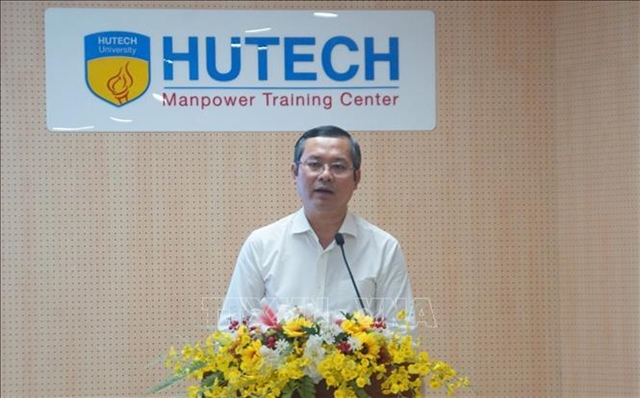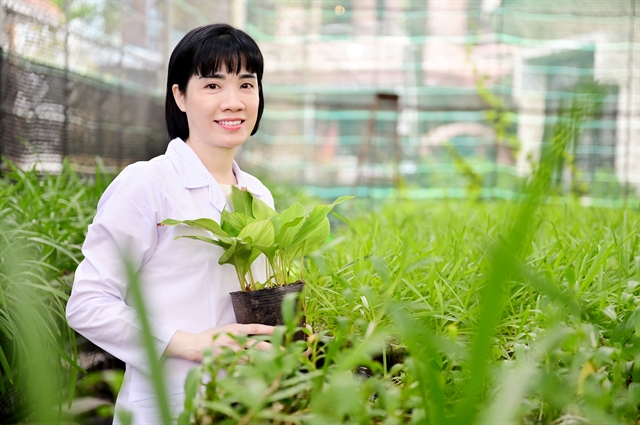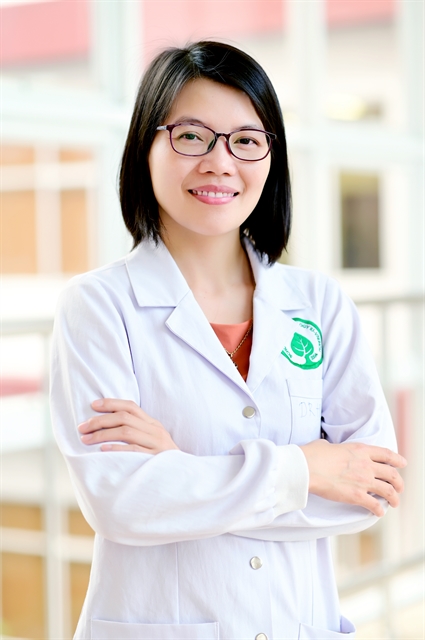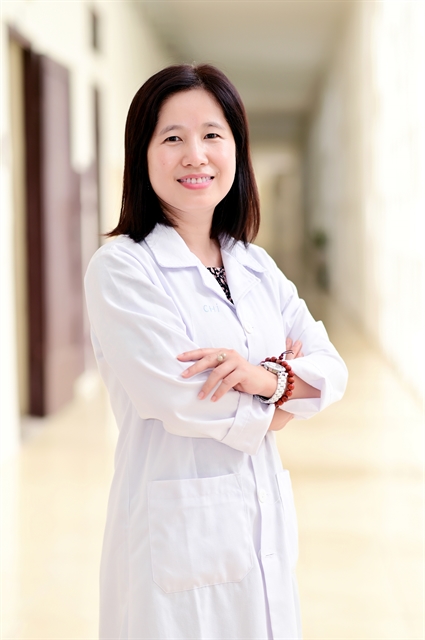 Society
Society

 |
| Nguyễn Thị Ái Nhung. — Photos courtesy of the prize council |
Three outstanding female scientists, honoured with the L'Oréal – UNESCO Science Awards for the Development of Women in Science 2023, speak to Việt Nam News reporter Thu Trang about their potential research projects in the fields of materials science and life sciences.
Associate Professor PhD Nguyễn Thị Ái Nhung, director of the Centre for Research, Production and Technology Transfer under the Institute of Science and Technology Research and Application, and also head of physical chemistry major, Faculty of Chemistry under the Huế University of Sciences.
Chemistry has always been my favourite subject since I was at school. As soon as I got my degree, I took a teaching job at my university. After nearly 20 years of teaching and doing research at the University of Sciences, Huế University, my passion for developing products related to applied chemistry, green chemistry and natural compounds for health care remains unchanged.
We focus on medicinal herbs and typical native plants in the Centre and Central Highlands, especially in Thừa Thiên-Huế. My research team decided to do our research project on three endemic plants of Huế, including black ginger, Phong Điền Asparagaceae (garlic) and Vietnamese dandelion.
The black ginger (Distinchochlamys ctrea) was located in Bạch Mã and Phong Điền forests in Thừa Thiên-Huế Province. This plant was originally discovered in 1995, but new genes were found in 2015 and recently we have had systematic and methodological studies for the conservation plan of this plant.
The second plant is Phong Điền forest garlic which was found in early 2023. It is assessed as a precious medicinal plant with many beneficial properties. Our initial research has shown that its medicinal properties on preventing disease and supporting disease treatment are significant.
And the last one is Vietnamese Dandelion. Our preliminary studies show that its active ingredients have good antibacterial properties, for example, they can support treatment for stomach ulcers, and have antibacterial, anti-inflammatory and disease inhibition properties.
We have taken liquid extracts and essential oil from these plants to study their bioactive compounds, and their active ingredients are the subject of our research on their applicability for disease syndromes treatment, such as for Alzheimer’s, diabetes, gout, and especially for antibacterial applications.
The findings from this research project will pave the way for further applications from medicinal plants in disease treatment. We aim at developing some new products such as herbal tea, extracts and healthcare products, and to popularise the application of medicinal plants.
The findings from this project will also create a good database for the preparation and application of clinical research on medicinal products to produce drugs and healthcare products, and bring applied products closer to the community.
Associate Professor PhD Nguyễn Thị Thu Hoài, deputy director of the Centre for Infectious Disease Research, International University under the HCM City National University
 |
| Nguyễn Thị Thu Hoài |
I started scientific research quite early. In my second year of university, I began doing science research in the field of microbiology and immunology. After graduation from university, I went to Germany to do research on Staphylococcus aureus bacteria and the proteomics of Staphylococcus aureus. Then I went to Belgium to do research on drug resistance mechanisms in gram-negative bacteria. After completing my research in Belgium, I returned to Việt Nam and continued my scientific research on drug resistance mechanisms.
Antibiotic resistance is an unsolvable problem. In the 1930s, antibiotics were first introduced to the community as a treatment method but soon after, antibiotic resistance appeared and from the 1950s to present, nearly 100 years, researchers have been pursuing this topic. It can be seen that antibiotic resistance is a multifactorial problem and we will never be able to avoid the development of antibiotic resistance because whenever we use antibiotics, antibiotic resistance will appear.
Bacteria have ability to develop drug resistance very quickly. Just one day after antibiotics exposure, they have developed morphological and molecular biological changes to respond to antibiotics and help them survive in antibiotic conditions. This development of resistance is continuous, even when we no longer use antibiotics the response still remains and, surprisingly, it does not affect the vitality of bacteria.
It is thought that when bacteria are exposed to antibiotics, they respond by reducing their growth but there are many types of antibiotics where bacteria do not reduce their growth at all but still thrive and are strongly resistant to medicine. Bacteria themselves are always capable of developing resistance to antibiotics, and humans have given them the opportunity for exposure to many antibiotics.
And where does this exposure from? It is from our daily life, from the usage of antibiotics in agriculture, in aquaculture, in daily use such as flu treatment or free usage without prescription, which leads to serious antibiotic resistance development.
The question is how to turn this mechanism into a diagnostic technique to quickly detect drug resistance. Recently, there has been a new development of PCR techniques. PCR is a long-standing technique with many applications and many different forms of PCR. The most recently used technique is digital droplet PCR. This technique is an advanced one in increasing the sensitive and quantitative characteristics of PCR method.
Our research project aims at warning people about the wrong usage of antibiotics to avoid shortage of drugs and antibiotics exhaustion in treatment. The second goal of this research is to develop new antibiotics generation. When we discover new molecular mechanisms, we will find new impact targets and develop new antibiotics basing on the findings. Finally, we aim to invent new test kits to make antibiotic resistance diagnosis quicker and more effective.
PhD Trần Thị Kim Chi, director of the Electron Microscopy Department, Institute of Materials Science under the Việt Nam Academy of Science and Technology
 |
| Trần Thị Kim Chi |
Since I started working at the Institute of Materials Science in 2002, my research direction has been optoelectronics. My research focuses on inventing luminescent materials, applicable on solid state lighting or developing luminescent quantum dots for application in Q-LEDs. I also develop photometric methods, such as high-resolution fluorescence absorption spectroscopy, time-resolved fluorescence spectroscopy and some quick spectroscopic analysis methods to determine objects’ structure.
By 2020, when doing research on energy storage, I found diversified applications for today. Energy storage system, in the simplest terms, is a device that stores energy now for later use. The widely-known energy storage device is lead-acid batteries (LABs). And presently, lithium batteries (LIBs) are widely used in electric cars, phones and many other appliances.
Each device has certain advantages and disadvantages. Lead acid batteries have been commonly used in automobiles. However, the disadvantage is the use of toxic chemicals and limited durability. The charge or discharge cycle reach only 300-500 cycles. When lithium batteries enter the market, the fast charge and discharge cycle and high energy storage density give them the advantage to dominate the market gradually and continue growth until today.
Besides outstanding advantages, lithium batteries also have some disadvantages. The process of disposing batteries requires a complicated technological process, is not environmentally friendly, and is expensive.
In the recent ten years, scientists have been aiming at a new battery type, multivalent metal ion batteries to replace lithium batteries.
Why should people use multivalent metal ion batteries? Because it is environmentally friendly, cheaper and its natural reserves are much larger than lithium.
When researching energy storage, I found that the development of multivalent metal ion batteries is quite necessary in Việt Nam. — VNS